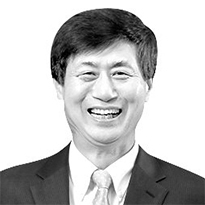From fast follower to innovation leader

The author is the president of the Korean Federation of Science and Technology Societies and an emeritus professor at Seoul National University.
The Joseon Dynasty (1392-1910) under King Sejong was not a country to be underestimated. Historians generally agree that Joseon in the 15th century was one of the best places to live in the world. Out of 48 innovations from East Asia at the time, 33 came from Joseon. As a result, farming output sharply increased to make the country a hotbed in science and technology discoveries. The national foundation for the development of science and technology under the reign (1418-1458) of the king crumbled over the following four centuries and Korea became a Japanese colony. Under the blind obsession with Neo-Confucianism, science and technology was treated poorly, slowly killing innovation along with defense and people’s livelihood.
Under the rule of Yeonsangun, two technicians from South Hamkyung in 1504 demonstrated a novel way to refine metals before the monarch. They argued that they could turn one geun (600 grams, or 1.3 pounds, in the old Korean unit of weight) of lead into two dons of silver (1 don in the Korean unit is 3.75 grams) through the method still being used in cupellation, a refining process of metals, according to the royal court records. There are no records on how Joseon used the new technology. But records say Japan had taken skilled Korean workers to take advantage of the refining method. At the time, Japan discovered a large silver mine, and through the import of the Joseon technology, it was able to dramtically increase the silver yield from mining. Japan soon became the world’s biggest silver producer, and through the revenue, it could develop weapons and warships.
During the Japanese invasion of 1592, thousands of Joseon potters were taken to Japan. They contributed to advancing Japanese skills to make pottery a key export item of Japan in the 18th to 19th century. The riches helped bring about the modernization period of Meiji. During the time, Joseon refused to accept the ways and products of outside civilizations. The isolated and receded society could not be a match for Japan, which had been fast in adopting foreign institutions and technologies. Ironically, the resources that later became Japan’s strength to occupy Joseon largely came from Joseon.
The Korean economy has prospered in an unprecedentedly stunning pace over the past six decades thanks to well-planned government-led policy and hard-working enterprises and people. The government adopted the “fast-follower” strategy by manufacturing products through imported advanced technologies to sell them abroad. The strategy worked well by leveraging on the innate features of speed and diligence of Koreans.
But the stagnated economic growth of Korea today suggests the limitations of the growth model based on emulation. Korea has reached a stage where it must come up with innovative products and technology for sustainability. The contest over technologies around the world underscores how science and technology have become essential for national viability.

Next year will be a milestone for Korean research and development. Government spending on R&D will exceed 30 trillion won ($23 billion) for the first time. When including the private-sector spending, Korea’s R&D investment could top 100 trillion won. The country could become the world’s No. 1 or No. 2 in R&D spending against its GDP. In the size of total investment, the country will become the fifth largest among the OECD member countries. On the surface, Korea has set the stage for innovative advances based on science and technology. But influential academic papers are few against the total number of publications. Trade balance in technology also has been in deficit to raise questions on the effectiveness of the investment. The fast-following model can hardly lead to any meaningful breakthroughs.
During the fast-following period, the government led the drive. The science and technology field only had to fulfill its duty. Such systems and culture remain unchanged since R&D activities were promoted from the 1990s. Evaluation based on achievements also follows the model of fast-follower. But creative ideas are not born out of planning. They sprout out under ripe conditions in various fields. They are bred under the ecosystem that appreciates the value of creativity and encourages adventures. For the colossal R&D spending to bear fruit, actions, not just plans, should be expedited to build an innovative ecosystem. Scientists and researchers restricting themselves to their field in their exclusive corners cannot bring about innovation. Barriers must come down for cross-sectional convergence and cooperation. Researchers must break out of their shells to broaden their realm.
The direction is clear. Science and technology must stay free from political logic. Public policy should be entirely based on data from scientific grounds. We should have learned the lesson from the Covid-19 pandemic. A sweeping overhaul in our science and technology system is needed to lead innovations. Innovation cannot come from a linear process of the basics-application-development model. We must become a front-runner in innovation, not a fast follower, through a colossal revamp of the ecosystem. To never repeat the sad history of losing a nation due to a laggard response to changes, we must establish a national system that can breed science and tech innovations.
Translation by the Korea JoongAng Daily staff.










with the Korea JoongAng Daily
To write comments, please log in to one of the accounts.
Standards Board Policy (0/250자)